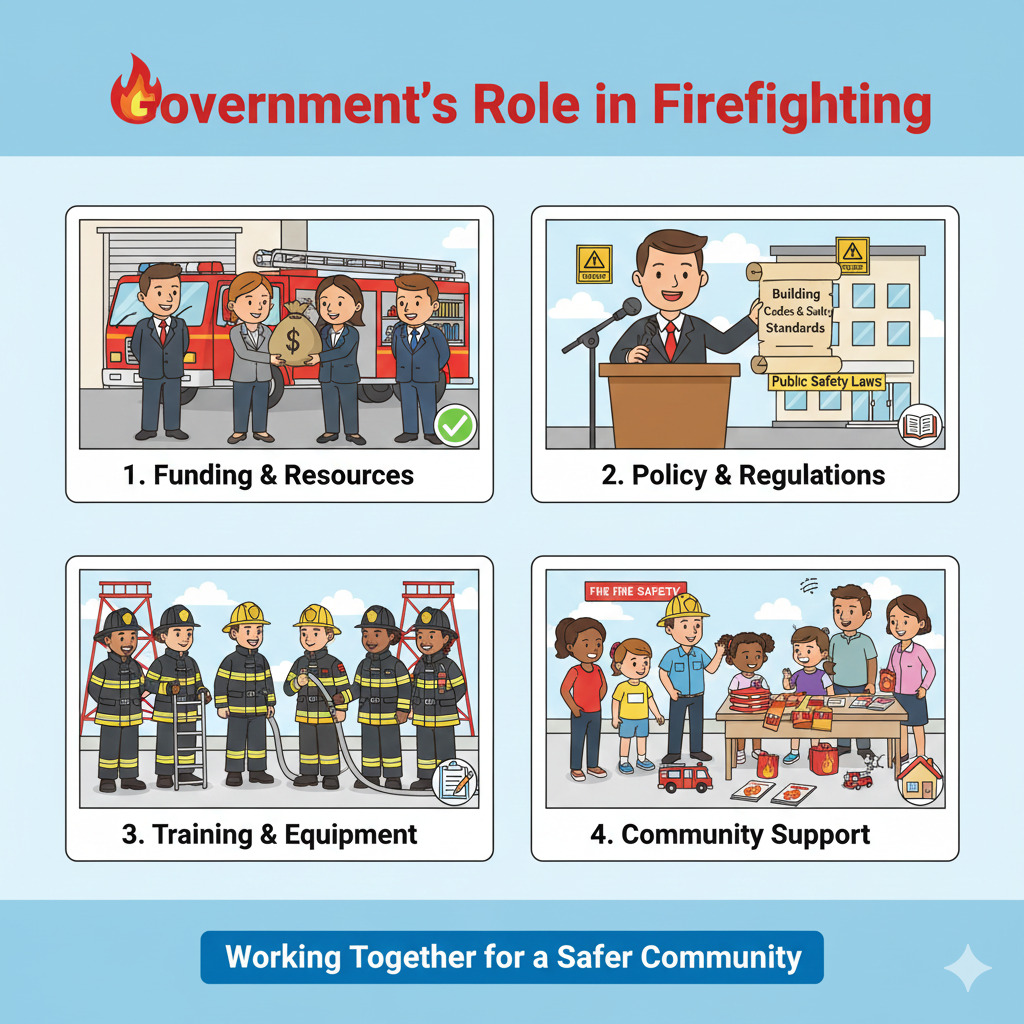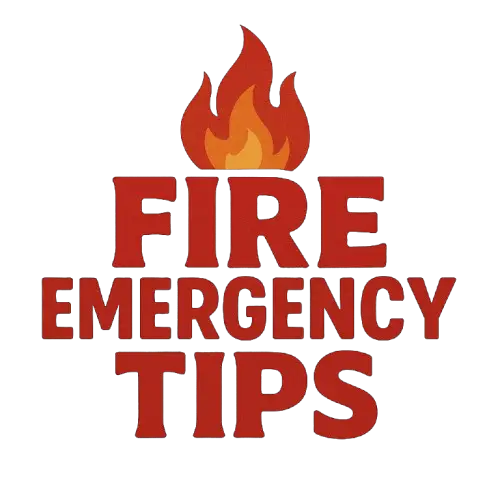
As a firefighter, I often get asked, “Is firefighting a government job?” The answer is straightforward yet nuanced. Let’s dive into the details to understand the relationship between firefighting and government entities.
Firefighting is indeed a government job in most cases. Municipalities, counties, and federal agencies typically oversee firefighting services. Understanding the structure and dynamics of this relationship is crucial for aspiring firefighters and those curious about the profession.
In this article, I’ll provide insights into the connection between firefighting and government entities. From funding to regulations, we’ll explore how government involvement shapes the firefighting landscape. Let’s unravel the layers of this essential partnership in the world of firefighting.
Key Takeaways
- Firefighting is primarily a government job, with municipalities, counties, and federal agencies overseeing firefighting services.
- Municipalities establish fire departments, allocate budgets, and set policies to enhance community safety.
- Counties coordinate resources, enforce fire safety regulations, and provide support during large incidents.
- Federal agencies like the U.S. Forest Service bring specialized expertise to combat wildfires beyond local boundaries.
- Government involvement impacts firefighting through funding, regulatory compliance, mutual aid agreements, specialized training, disaster response, and more.
- Understanding the partnership between firefighting and government entities is crucial for ensuring efficient emergency response and community safety.
Exploring the Relationship Between Firefighting and Government Entities
Firefighting is intricately linked to government entities, with municipalities, counties, and federal agencies playing vital roles in overseeing firefighting services. When we consider if firefighting is a government job, the answer becomes evident through these partnerships.
Municipalities: These local government bodies are often at the forefront of firefighting services. They establish fire departments, allocate budgets, and set policies to ensure fire protection for their residents. I’ve seen firsthand how municipalities work closely with firefighters to improve emergency response times and enhance community safety.
Counties: In many regions, county governments also play a significant role in firefighting. They may coordinate resources across multiple municipalities, provide additional support during large-scale incidents, and enact fire safety regulations that apply county-wide. This collaboration ensures a unified approach to fire prevention and control.
Federal Agencies: While firefighting is primarily a local concern, federal agencies like the U.S. Forest Service and the Bureau of Land Management are crucial in combating wildfires that extend beyond municipal and county boundaries. These agencies bring specialized expertise, resources, and personnel to manage wildfires effectively, showcasing the interconnected nature of firefighting and government entities.
Understanding the relationship between firefighting and government entities is essential for comprehending the broader framework in which firefighting operates. By recognizing the diverse roles that different levels of government play in supporting firefighting efforts, we can appreciate the collective effort needed to safeguard communities from fire hazards and emergencies.
Overview of Firefighting as a Government Job
In the realm of firefighting, it’s essential to recognize the significant presence of government entities. Firefighting is deeply intertwined with government structures, making it a quintessential government job. Municipalities, counties, and federal agencies all play vital roles in shaping the landscape of firefighting services in the United States.
- Municipalities: These local bodies establish and maintain fire departments, allocate necessary budgets, and are pivotal in ensuring effective emergency response within their jurisdictions. Working closely with firefighters, municipalities prioritize community safety and well-being by investing in firefighting resources and infrastructure.
- Counties: Acting on a broader scale, counties serve as coordinators of resources during large incidents, providing support and assistance when needed. Additionally, counties enforce fire safety regulations across regions to maintain a high standard of fire prevention and control, contributing to the overall safety of communities.
- Federal Agencies: Entities like the U.S. Forest Service bring specialized expertise to the table, particularly in combating wildfires that extend beyond local boundaries. Leveraging their unique capabilities, federal agencies collaborate with local and state partners to tackle wildfire situations that require a collective effort on a national scale.
Understanding the governmental machinery behind firefighting is crucial in comprehending the intricate web of partnerships and responsibilities that ensure the safety and well-being of communities nationwide.
Municipalities, Counties, and Federal Agencies in Firefighting
When it comes to firefighting, it’s important to understand the crucial roles played by municipalities, counties, and federal agencies. Municipalities are responsible for establishing and maintaining local fire departments. They allocate budgets for equipment, training, and personnel, prioritizing community safety at all times.
Counties play a key role in firefighting by coordinating resources across different municipalities. They enforce fire safety regulations, conduct inspections, and provide support during large incidents that require collaboration between multiple jurisdictions. This unified effort ensures a swift and effective response to emergencies.
On the federal level, agencies like the U.S. Forest Service bring specialized expertise to the table, particularly in wildfire situations that extend beyond local boundaries. Their knowledge and resources are invaluable in managing and combating large-scale wildfires that pose a threat to both rural communities and natural habitats.
| Municipalities | Counties | Federal Agencies |
|---|---|---|
| Over 30,000 in the US | 3,007 counties | U.S. Forest Service, FEMA, etc. |
Impact of Government Involvement on Firefighting Services
Working as a firefighter is indeed a government job in many cases, with municipalities, counties, and federal agencies playing crucial roles in ensuring public safety. The government’s involvement has a significant impact on firefighting services across the United States:
- Funding Allocation: Government entities allocate budgets for fire departments, ensuring they have the necessary resources and equipment to respond to emergencies promptly.
- Regulatory Compliance: Counties enforce regulations related to building codes and fire safety standards, contributing to a safer environment for communities.
- Mutual Aid Agreements: Government coordination allows for mutual aid agreements between jurisdictions, facilitating assistance during large-scale incidents that overwhelm local resources.
- Specialized Expertise: Federal agencies like the U.S. Forest Service provide specialized knowledge in wildfire management, offering support in handling fires that extend beyond local borders.
- Training and Professional Development: Government involvement ensures that firefighters receive training and opportunities for professional growth, enhancing their capabilities in emergency response.
- Disaster Response: Agencies such as FEMA collaborate with local entities to coordinate responses to disasters, ensuring a comprehensive and organized approach to emergency situations.
The combined efforts of government agencies, municipalities, counties, and federal entities contribute to the effectiveness and efficiency of firefighting services nationwide.
Understanding the Partnership: Firefighting and Government
When exploring the landscape of firefighting in the United States, it’s critical to understand the integral partnership between firefighters and government entities. As a firefighter, my role is intertwined with the support, resources, and regulations set forth by various levels of government.
Government involvement in firefighting services is not limited to funding and regulations alone. It encompasses a wide array of responsibilities that bolster the efficiency and effectiveness of our operations in ensuring public safety. From establishing and enforcing safety codes to coordinating interagency collaboration, government entities play a vital role in the realm of firefighting.
As a firefighter, I rely on government support in various aspects of my job. Whether it’s through the allocation of resources, training programs, or disaster response coordination, the partnership between firefighting and government is a fundamental aspect of our success in safeguarding communities across the nation.
By fostering a strong relationship with government agencies at the local, state, and federal levels, firefighters can tap into a wealth of expertise and resources that are essential for carrying out our duties effectively. This partnership highlights the interconnected nature of firefighting and government involvement, underscoring the significance of collaboration in ensuring the safety and well-being of the public.
Understanding the intricacies of this partnership is key to comprehending the broader context in which firefighting operates in the United States. By recognizing the mutually beneficial relationship between firefighters and government entities, we can continue to enhance our collective efforts in mitigating risks, responding to emergencies, and protecting lives and property.
Conclusion
Firefighting in the United States is undeniably intertwined with government operations, forming a crucial alliance for public safety. The collaboration between firefighters and government agencies extends far beyond financial support, encompassing regulatory compliance, safety standards enforcement, and seamless interagency communication. By nurturing strong partnerships with governmental bodies at all levels, firefighters ensure access to essential resources, training, and expertise vital for effective emergency response. Recognizing the depth of this relationship is key to optimizing collective efforts in safeguarding communities and upholding the well-being of individuals and properties. Embracing the collaborative essence of firefighting and government involvement is fundamental in fortifying our ability to address emergencies and enhance overall resilience in the face of diverse challenges.
Frequently Asked Questions
What is the relationship between firefighters and government entities in the United States?
The relationship between firefighters and government entities in the United States is symbiotic. Government support extends beyond funding to include safety code enforcement, training, and disaster response.
Why is government involvement crucial for firefighters?
Government involvement is crucial for firefighters as it provides resources, expertise, and interagency coordination necessary for effective emergency response and ensuring public safety.
How do firefighters benefit from working with government agencies?
Firefighters benefit from working with government agencies by accessing vital resources, specialized training, and expert guidance, enhancing their ability to carry out their duties effectively.
